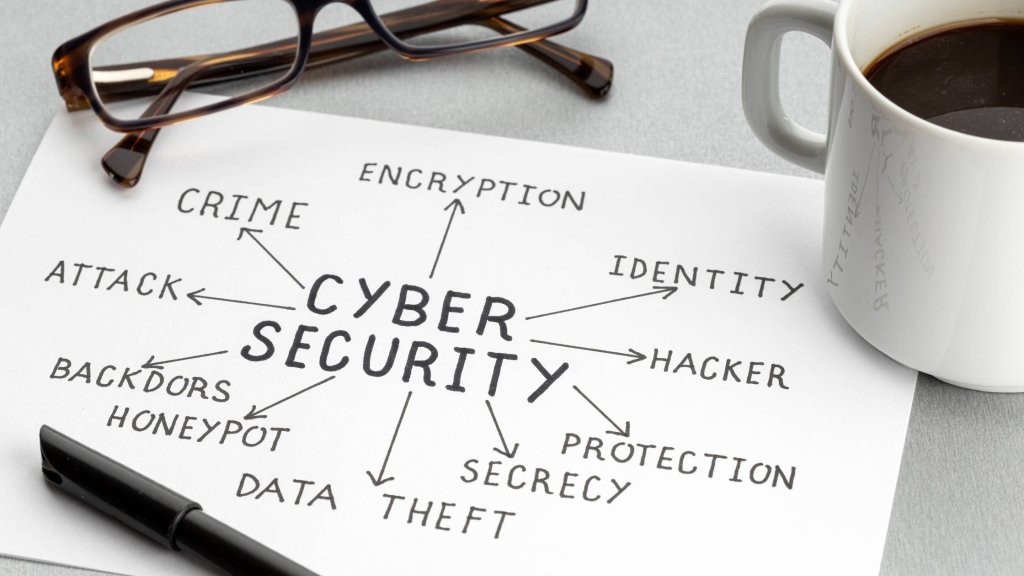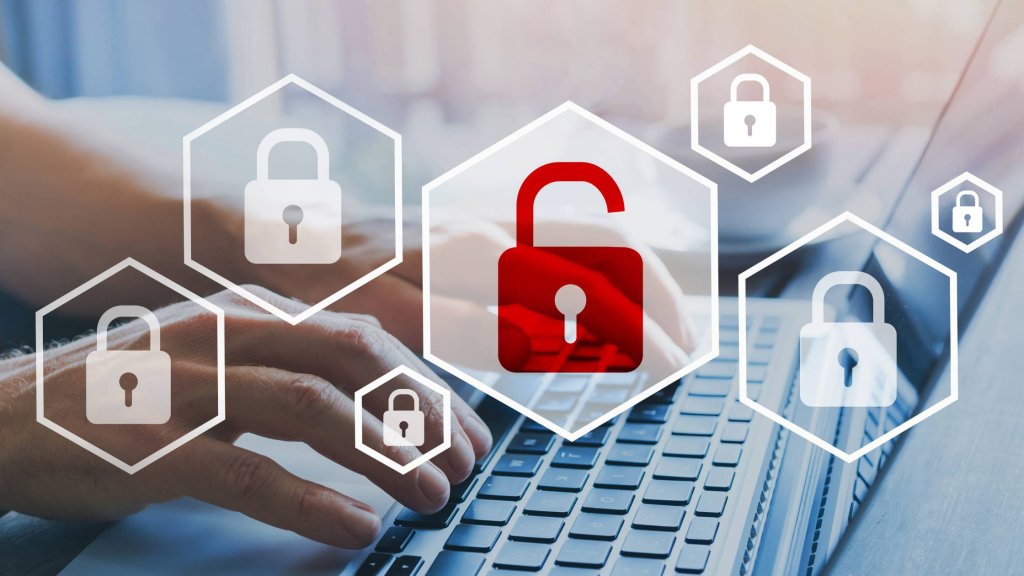VIEW BY TOPIC
- Finding Customers
- Business Systems
- Managing Employees
- Leadership
- Managing Money
Related Posts

Ready to Grow Your Business Fast?
Here’s How I Grew Five Businesses, and Eventually Sold One to a Fortune 500 Company.

Effective Cybersecurity Strategies for Small Business Owners
Doesn’t it sound like a dream come true when you have the ability to stay one step ahead in the game of online security? Well, it does! And it’s possible! Providing peace of mind and establishing digital safety have risen to the top of the priority list for businesses of all sizes. Developing cybersecurity strategies for your company will make a huge difference, regarding the success of your endeavor.
Even though you’re a finance, accounting professional, or small business owner looking to safeguard your digital assets from cyber threats and all of those sophisticated technologies and hackers, you’ve come to the right place.
Do not give cybercriminals the upper hand; instead, arm ourselves with actionable insights that will keep them at bay and encourage them to take your business more seriously.
Let’s start with the basics first, shall we?
Understanding key terminologies: cybersecurity, data protection and information security

For those involved in finance, accounting, or running a small business, having a grasp of essential terminology is paramount. As we all know, the world is becoming increasingly digital, and protecting sensitive information and ensuring cybersecurity are more important than ever.
However, it’s not uncommon to find the distinctions between terms like cybersecurity, data protection, and information security a bit perplexing. And having a closer look at these crucial terms in great detail can help enhance your knowledge and empower you to develop effective cybersecurity strategies.
1. Cybersecurity: The practice of protecting computer systems and networks from malicious attacks, theft, or damage is referred to as cybersecurity. It entails putting in place a number of precautions to prevent unauthorized access to computers, software programs, and data stored on them. The main goal of cybersecurity is to ensure the confidentiality, integrity, and availability of digital assets.
2. Data protection: The goal of data protection is to prevent fraudulent use or misuse of personal information. This includes sensitive information such as names, addresses, social security numbers, or financial records that could potentially reveal an individual’s identity or harm the reputation of an organization. Data security measures are put in place to comply with regulations like the General Data Protection Regulation (GDPR), which establishes strict guidelines for collecting, storing, and using personal data.
3. Information security: The purpose of information security is to protect all types of confidential information from any type of threat, whether physical or digital, that could jeopardize its confidentiality, integrity, or availability. Trade secrets, financial records, and intellectual property are all examples of this. Information security extends beyond technological solutions to include policies and procedures that govern how data is handled and accessed within a company.
The primary distinction between these terms is that cybersecurity emphasizes protecting computer systems and networks, whereas data protection concentrates on protecting personal information, and information security focuses on covering all types of confidential information.
Yet, each of the three is related to the others and required for the creation of an all-encompassing security plan.
Providing security solutions for professionals and small businesses
Enhancing cybersecurity is not an option; it’s a necessity. And, in order to do so, you must strengthen your security measures and protect sensitive data with appropriate strategy solutions. These are the key strategies that every professional should be aware of:
- Maintaining cybersecurity with residential proxies
- Data encryption and multi-factor authentication
- Process discovery and optimization
- Employee training
- Security audits and risk assessments
- Backup and recovery plans
These are just a few of the steps involved in installing the proper cybersecurity tools, which can greatly enhance security strategies and safeguard vital financial and business data for finance, accounting, and small business owners.
Maintaining cybersecurity strategies with residential proxies

Leveraging residential proxies can be a game-changer when bolstering and modernizing your approach to cybersecurity strategy. The careful research and selection of the best residential proxies are crucial in this endeavor.
These proxies, which route online traffic through a real household IP address, offer a substantial boost in anonymity and security, akin to adding a layer of authenticity to your online interactions.
Cybersecurity professionals find them invaluable for sophisticated research, penetration testing, and improved threat monitoring, all without revealing their true identities. Besides, residential proxies allow users to circumvent geo-restrictions and access region-specific content, allowing for more comprehensive threat intelligence collection.
Their role doesn’t end there; they also play a vital part in the detection and mitigation of cyber threats by allowing for more effective monitoring of network traffic. Having residential proxies is a valuable addition to the cybersecurity toolkit, ensuring a safer and more versatile approach to safeguarding the online activities of your small business.
Enforcing multi-factor authentication and a strong password policy
Being present in the digital world can bring many benefits, but it can also mean that cybersecurity threats loom large, particularly for small businesses and self-employed finance and accounting professionals dealing with sensitive financial data.
To protect against these threats, a strong password policy is crucial, involving complex and unique passwords distinct from easily guessable personal details. This involves combining uppercase and lowercase letters, numbers, and special characters while steering clear of easily deduced details like names and birthdates.
Equally crucial is using distinct passwords for carious accounts to prevent potential hackers from gaining access to multiple systems in the event of a single password breach.
The adoption of multi-factor authentication (MFA) adds an extra layer of security, requiring two forms of identification for account access, significantly reducing the risk of unauthorized breaches.
Selecting the right multifactor authentication (MFA) solution for your company’s requirements is crucial. You should also make sure that all employees receive thorough training, particularly if they use their own devices for work. This training should emphasize the importance of device security and frequent updates.
Boosting cybersecurity strategies with process discovery and optimization
Ever wondered: What is process discovery? This fundamental approach plays a major role in the strategies mentioned before, and it can contribute significantly to enhancing overall security and data protection.
Process discovery is a methodical examination of an organization’s operations to identify vulnerabilities and inefficiencies that could be exploited by cyber threats. By understanding these workflows, businesses can bolster security.
It stands as both a technology and a methodology that serves the primary purpose of mapping the intricate web of processes and activities within a computer network or system. In this context, it serves multiple pivotal purposes:
- Vigilant security monitoring anomalies and questionable network activity can be quickly identified thanks to process discovery.
- Sharper intrusion detection is to enhance intrusion detection; it assists in locating unauthorized or malicious processes.
- Guiding incident response is essential for forensics and post-event analysis in security breaches.
- Sound asset management ensures up-to-date inventories of network processes, aiding in vulnerability assessment.
- Empowering access control means understanding running processes and their origins, which enables access control in a secure network environment.
Educating team members on cybersecurity practices

Equipping team members with cybersecurity expertise not only strengthens an organization’s digital defenses but also cultivates a security-aware workforce. This empowers employees with the proficiency and vigilance needed to effectively identify and counter cyber threats.
This awareness holds immense value in an era where cyberattacks can trigger extensive repercussions, spanning from financial losses and reputational harm to legal entanglements.
Through comprehensive training, team members collaborate to build up the organization’s defenses; correspondingly, it is an investment in safeguarding the company’s interests and the trust of its stakeholders.
Conducting regular security audits and risk assessments
A fundamental element of an effective cybersecurity strategy is regular security audits and risk assessments. This process involves scrutinizing your existing security systems and protocols to uncover vulnerabilities and potential fraud.
By consistently appraising your system, you can pinpoint areas requiring enhancements and enact necessary changes proactively.
Assessing the valuables of your company, including networks, hardware, software, employee-owned devices, and sensitive data, is the first step in starting a security audit.
This includes both physical assets like servers and virtual ones such as cloud-based databases.
Following asset identification, the subsequent step involves evaluating the existing security measures in place, encompassing firewalls, antivirus software, encryption protocols, access controls, and password policies.
Backing up data and implementing recovery plans
Data backup is the practice of making copies of critical data and securely storing them. This safeguards against potential data loss or corruption, whether it’s due to a cyberattack or a technical malfunction.
Data can be backed up through physical means, like external hard drives or tapes, or by leveraging cloud-based solutions. Cloud storage, in particular, offers flexibility and convenience, enabling automatic, internet-based backups without manual intervention. Besides, cloud service providers implement robust security measures to protect data from unauthorized access.
Apart from data backups, establishing a well-defined disaster recovery plan is essential for ensuring business continuity and minimizing downtime in the event of cyber incidents.
This plan describes the steps involved in crisis management, including identifying key systems, allocating responsibilities, creating communication protocols, and routinely evaluating the efficacy of procedures.
Investing in the digital future with cybersecurity strategies
After all, it is not about building defenses but about setting up a fortress. Each strategy, each term, and each step is a stone in the walls of your digital base of operations, and with it, you can confidently navigate the dynamics of cybersecurity.
Remember that securing your objectives, dreams, and labor of love for the betterment of your small company or accounting practice extends beyond data security, and this is something you should always invest in – you’re investing for your future.
Embracing the journey within and equipping yourself with the right tools, knowledge, and strategy can give you the confidence to thrive in this digital era. Just go with it!
Author:
Mika Kankaras
Mika is a fabulous writer with a talent for creating interesting material and breaking down difficult ideas into readily digestible chunks. As an avid cat lover and cinephile, her vibrant personality and diverse interests shine through in her work.














